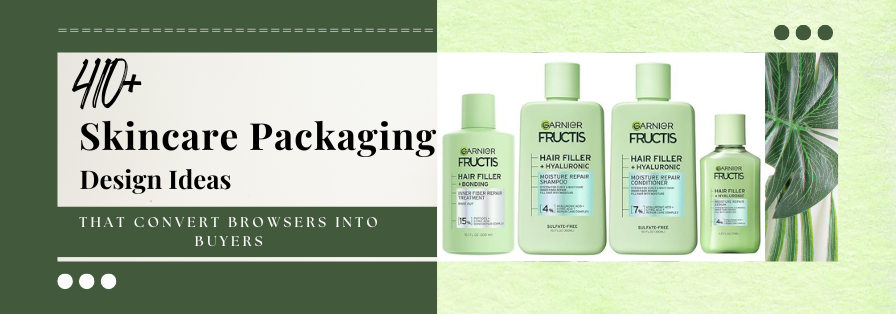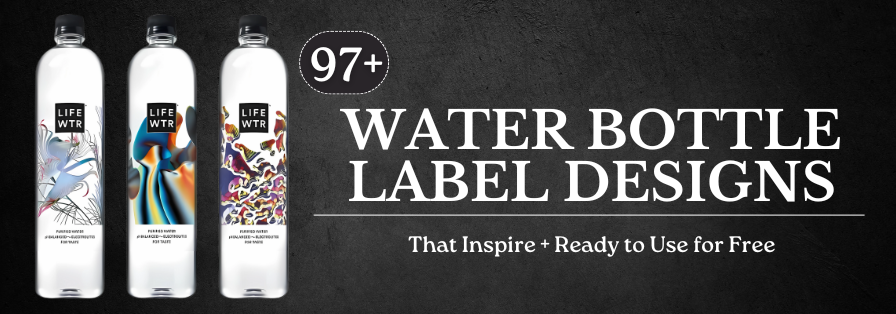Did you know that 57% of small businesses readily invest more than $500 in creating a professional logo for their business?
The human brain can process visuals more than 60,000X faster compared to words. This is why it is paramount to invest in professional logo design that stand out and represent your brand to its most authentic self.
With the rise of new startups in this era, every brand currently has created logos that represent their business. A logo represents the products and services you sell to the consumers.
A logo defines your brand identity, distinguishes your brand from your competitors and makes the first impression on your clients.
Since your logo impacts how your clients perceive your company, you need to design a logo that seals the deal.
Creating a professional logo is a tough nut to crack. But we have simplified the process for your understanding. Let’s get started already and understand how a logo can make or break your business and the steps to design a professional logo for your business.
Table of Contents
What is a professional logo & why is it needed to improve customer relationships?
What is the first thing you think when you hear brands like Mcdonald’s or Apple? Is it the yellow ‘M’ and the half-bitten apple? What about Twitter’s blue icon and Coca-Cola’s red and white script?

All of these are contributors to these brands’ success.
A logo makes your brand instantly recognisable, just like you recognise these brands by their logos. Even if you were never a customer of these brands, there is no doubt which business these logos represent.
A professional logo shows the quality and combines concepts, psychology and trends that are suitable for your brand.
As we said, it makes a terrific first impression on your customers. Let’s discuss that further.
Customers only take about a fraction of a second to make purchasing decisions.
A logo is a unique and creative design that attracts your target customers with the help of various typefaces, colours, sizes and styles relevant to your business. This means your logo accurately depicts your company and the services you provide.
Whenever your target customers find your professional logo, they instantly know who to choose for their requirements, resulting in more traction and revenue for your brand.
Also, a professional logo created by logo design company will improve your customer interaction, resulting in higher customer loyalty and trust whenever they see your logo. If your logo gives off a positive and reliable vibe, your customers will be loyal to your services, making customer retention strategies easier.
How does a professional logo make a terrific impression on your brand identity?
Professional logos are created with hours of intensive market research, competitive analysis and other aspects that help you design a unique and timeless logo for your brand. It takes quite a lot of thought to create outstanding logo ideas that genuinely represent your branding and enhance your brand identity.

Suppose you want to establish yourself in the market. In that case, you need to get your brand a professional logo design that represents your brand well and helps your target customers remember your brand consistently. You cannot go wrong with a logo design as your logo is frequently seen as your brand’s iconic pictorial image.
What are the parts of a professional logo?
Understanding how your potential clients and consumers perceive your brand is essential. Hence, several parts of a professional logo have their importance. Let’s have a quick understanding of each one of them below.
- Only-Icon logos
If your logo has only a graphic element like the Twitter bird for Twitter or the half-bitten apple for Apple, it is called an Only Icon Logo. Here the design is clear and recognisable. The icon takes all the attention here without including any words, and everyone can immediately identify the brand associated with the icon.

Source:https://99designs.com/

Source:https://99designs.com/

Source:https://dribbble.com/

Source:https://dribbble.com/

Source:https://dribbble.com

Source:https://dribbble.com/

Source:https://dribbble.com/

Source:https://dribbble.com/

Source:https://dribbble.com/

Source:https://dribbble.com/

Source:https://dribbble.com/

Source:https://dribbble.com/

Source:https://dribbble.com

Source:https://dribbble.com/

Source:https://dribbble.com/

Source:https://dribbble.com/
- Only-text logos
When a logo has no visuals, and the company’s name becomes the design, it is called an only-text logo. Samsung and Sony are some common examples of only text logos. Here the font of your words plays a massive role as they are the only visual element representing your brand.

Source:https://99designs.com/

Source:https://99designs.com/

Source:https://99designs.com/

Source:https://99designs.com/

Source:https://99designs.com/

Source:https://99designs.com/

Source:https://99designs.com/

Source:https://99designs.com/

Source:https://99designs.com/

Source:https://99designs.com/

Source:https://99designs.com/

Source:https://99designs.com/

Source:https://99designs.com/

Source:https://in.pinterest.com/

Source:https://in.pinterest.com/

Source:https://in.pinterest.com//

Source:https://99designs.com/

Source:https://99designs.com/

Source:https://99designs.com/

Source:https://99designs.com/

Source:https://in.pinterest.com/

Source:https://in.pinterest.com/

Source:https://in.pinterest.com/

Source:https://in.pinterest.com//
- Text-and-icon logos
Text and icon logos are usually a combination of both icons and texts that are closely interwoven. Ikea and Nivea are some common examples of cion and text logos. The goal here is to ensure that none of the elements overpowers each other and is compatible enough to have a clear contrast in the eyes of the consumers.

Source:https://99designs.com/

Source:https://99designs.com/

Source:https://99designs.com/

Source:https://99designs.com/

Source:https://99designs.com/

Source:99designs.com

Source:99designs.com

Source:99designs.com

Source:https://99designs.com/

Source:https://99designs.com/

Source:https://99designs.com/

Source:https://99designs.com/

Source:https://99designs.com/

Source:99designs.com

Source:99designs.com

Source:99designs.com

Source:https://99designs.com/

Source:https://99designs.com/

Source:https://99designs.com/

Source:https://99designs.com/

Source:https://99designs.com/

Source:99designs.com

Source:99designs.com

Source:99designs.com
Steps to designing a professional logo to take your brand to the next level
As we said, designing a unique logo is never easy. You need to consider many elements when creating a new logo for your brand. Here is a step-by-step guide to help you through the process of designing an outstanding logo for your business, whether you choose to do it yourself or hire someone for the procedure.
- Recognize The Initial Reasons Behind Why You Need A Logo

The first step to designing a professional logo is to understand the goal of your logo and how it is relevant to your business. Your logo represents your business and denotes why your consumers should like your brand.
Since your logo has the power to communicate to the consumers, it must represent the right reasons why your brand is their best bet and seals that first impression! Hence, it is crucial to understand why your customers should choose your brand over others. This is best done when you know what makes your brand differ from your competitors.
- Make Sure To Establish Your Brand’s Identity
Since your logo communicates your brand identity, you need to analyse your brand’s personality.
For example, if your brand has a fiery and punk brand identity, choosing colours that bring out this vibe, such as yellows and reds, is the better choice.

You need to be clear about what makes your brand special, as this will simplify the process of designing a professional logo. This way, you can design suitable icons and texts that complete your brand image and are compatible with your brand values, mission and vision.
- Monitor what your Competitors are doing
One universal tip that works best across every marketing strategy is competitive analysis.
Sure, you do not want to steal the ideas of your competitors, but analysing their logos will give you a better understanding of what is working well for your target audience and the aspects you need to avoid.

Hence, it is important to find relevant competitor brands that are well-established in the industry and find the differences that make them stand out.
However, ensure that you add elements that make your brand stand out from your competitors. For example, if most of your competitor brands have a monotonous logo, it’s time that you add some subtle colours to make it more recognizable.
- Select A Fabulous Design Style
Once you have a clear idea of your brand identity and the elements you want to add to your logo, it’s time to bring your vision into a tangible design finally. In this step, you may come across various shapes, graphics or colour styles suitable for your brand aesthetics.

For example, if your brand imparts an exciting vibe, friendly logos are the best choice, while classy logos are most suitable for luxury brands.
- Concentrate On The Colour
Colours have several meanings and emotions attached to them, as colour psychology is an essential element that requires your immense attention.
For example, red colours denote passion, anger, or excitement, while orange evokes an energetic and loud voice in your logo.

Your chosen colours should be relevant to your brand style, archetype and voice.
Again, you need to ensure that the colours you choose complement each other and do not clash, as they may not look good in the eyes of the consumers. Hence, the safer way is to abide by the colour palette to choose the right colours for your logo.
- Choose The Right Typography
The fonts you choose for your logo are the next important element representing your brand identity. Most brands use a generic font, while others use the extreme opposite.
Ariel is a very generic font used by most brands.
The key is choosing legible fonts that match the brand’s style. Avoid overused and generic fonts or those that are too complex and hard to read.

For example, Serif is an excellent font if your brand has a classic vintage and elegant vibe. It can also be used to add a personalised touch to your logo.
- Be Unique
The prime goal of your logo is to be unique and stand out across your competitor brands. While most brands add blue to their logo as it signals trust and reliability but is not necessarily a rule for every company.

Since blue is a generic option, you can go with other colours that your competitors aren’t using but are true to your brand voice. This way, your logo turns out to be unique and easily recognisable to your consumers.
- Maintain Relevance
Sure, you may have added unique colours and fonts, but you need to ensure that the logo you design is relevant to your brand. The goal here is to be familiar with the design trends.

Take some time out to analyse features in logos that are popular, outdated and underused. This will give you a better direction for your logo design. Analyse the colour, shapes and fonts used by most brands and note the similarities that make the logos relevant to the brand. This way, you can ensure that the designs are accurately relevant to your brand and represent it well.
Wrapping Up!
A professional logo is an integral part of your brand identity. Most fortune 500 companies have spent millions creating a timeless logo that they utilise for years in their marketing strategies.
With the steps mentioned above, creating a professional logo can be much simpler than it sounds. Start developing a clear goal and work your way with suitable colours, fonts and shapes that bring your vision together in your brand logo. Ensure to ask for feedback from the other members, as the more improvisations you can include in your logo, the better it gets by settling on the final logo design.
Author: Megha Malik

As a passionate entrepreneur and creative brand consultant with experience of 14 years in digital, branding and packaging industry, it is my honest effort to put my experiences and knowledge of industry towards readers. A chartered accountant by degree but a marketing personality in blood has motivated her to take in designing industry as a career. With her fun-loving personality and sharp branding skills, she is a great motivational speaker on her YouTube channel, an active member in various business channels offline as well as online. Do connect me personally via my LinkedIn and I love to share my expertise with you.



